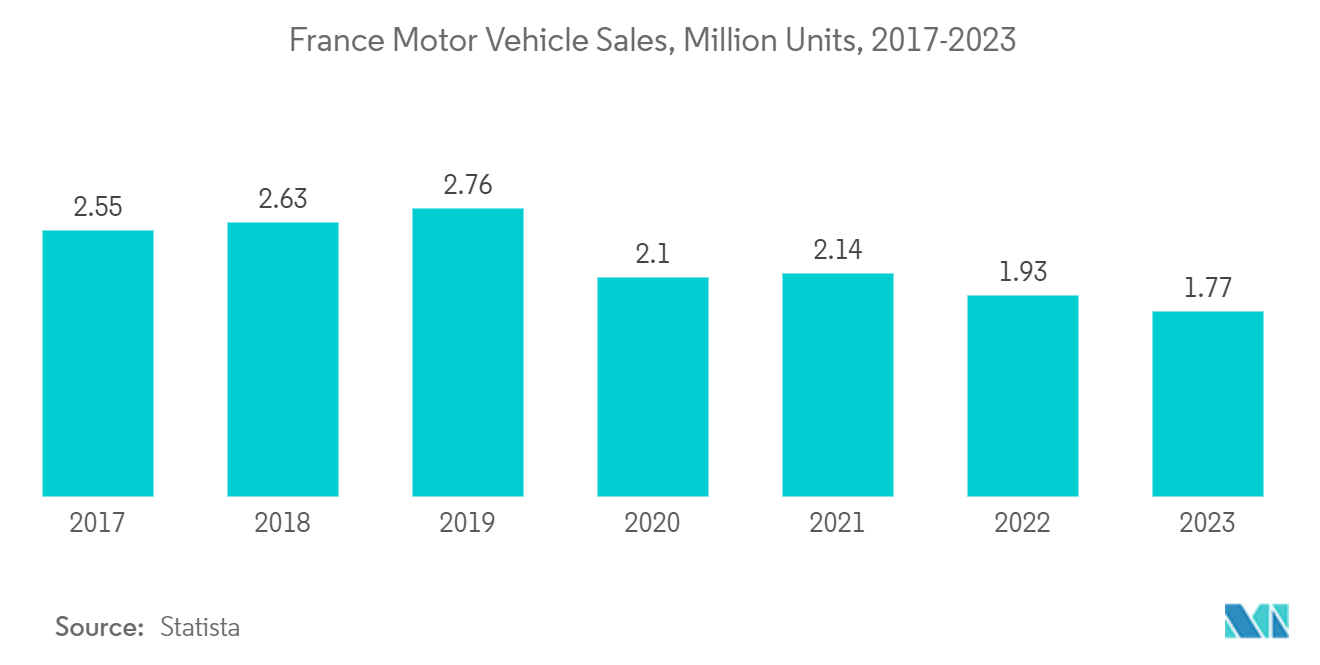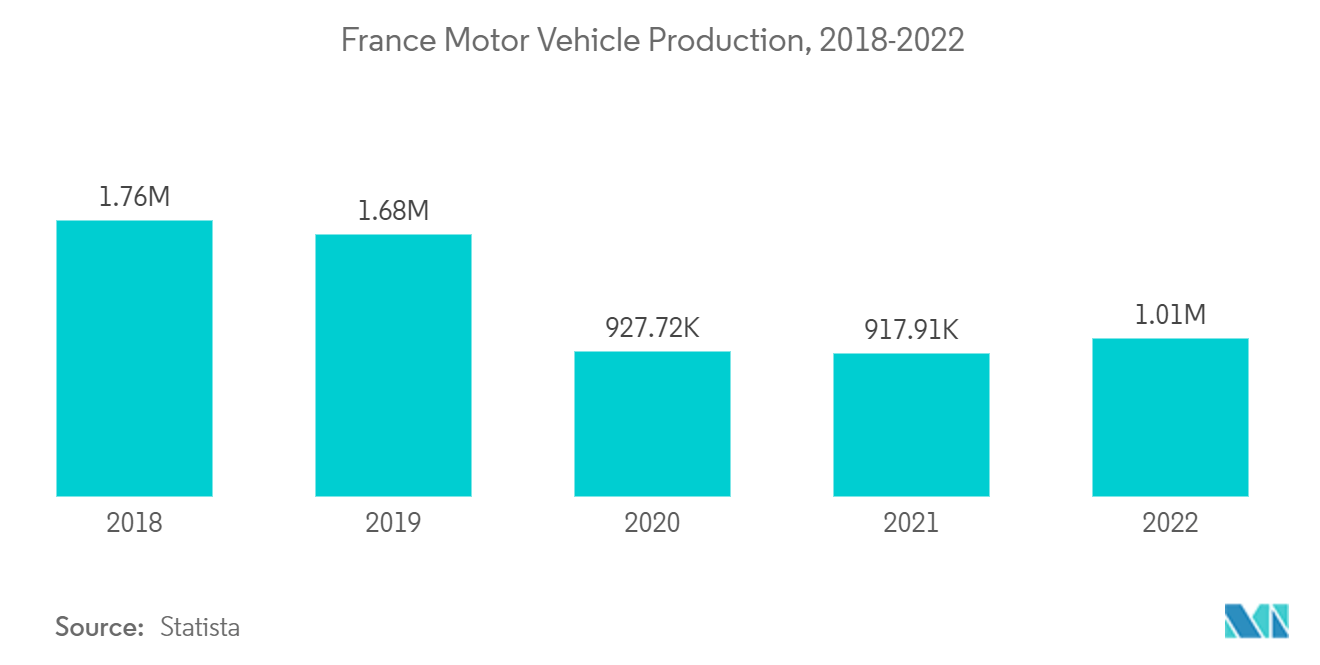Market Trends of France Automotive Parts Zinc Die Casting Industry
Rising Demand for Vacuum Die Casting and Enactment of Stringent Emission Regulations
Several vehicle manufacturers focus on zinc parts as zinc-casted products go directly into the assembly process. Zinc-casted products already have a better finish, reducing the special finishing process. Zinc die-casting parts are usually equipped with better mechanical properties like toughness. They have better thermal and electrical conductivity than other die-casting parts, which is likely to enhance the demand for zinc die-casting parts in vehicles.
- Globally, countries have formulated stringent emission norms to cater to the cause of reducing global warming. Governments worldwide are making efforts to minimize the negative effects of global warming and reduce their carbon footprint.
- A number of countries are implementing emission standards, and OEMs worldwide are expected to explore new technologies that help reduce emissions in automobiles. Freight companies and fleet owners are extensively moving toward technologies which are expected to reduce the average emission rate.
- Lightweight vehicles and energy-saving trends are driving the demand for zinc die casting. Moreover, the French die-casting market is experiencing an increased adoption of competitive technology to increase production.
- Earlier, pressure die casting was the most widely employed production process. However, the vacuum die-casting process has been gaining popularity over the past couple of years due to its better welding characteristics, higher mechanical strength, and lower gas porosity. Vacuum die-casting outcomes depend on variables like pressure and temperature to get the best outcomes. Manufacturers must adhere to particular temperature guidelines to preserve the alloy's metallurgical characteristics.

Transmission Parts Expected to Grow During the Forecast Period
All regions worldwide are consistently working toward enacting regulations for reducing emissions and improving fuel economy in the automotive industry, which is driving the market. This led to an outlay in the modernization of vehicles and encouraged automakers to exert zinc parts for automotive vehicles.
- Gear sets, valve bodies, stators, drive motor housing, transmission housing, axles (both front and rear), and other transmission housing parts are some of the commonly die-casted transmission parts in the automotive industry.
- Electrical and hydraulic components in an automobile work simultaneously. Reliability and quality are of utmost importance in transmission parts. The transmission system in any automobile is an extremely complex combination of mechanical functions. These parts are prone to extreme conditions and environments, making their integrity a very high priority.
- The increase in vehicle electrification has been rampant in France, coupled with the growing traction of hybrid powertrains in Europe. Thereby, the adoption of zinc castings is critically increasing in areas such as battery compartment housings and various transmission and powertrain components for these vehicles, driving the growth of the zinc die-casting market for transmission parts in the region.
- The integration of zinc die casting in automotive transmission systems offers a range of advantages, including weight reduction, improved performance, durability, and environmental sustainability. As the automotive industry continues to seek innovative solutions for efficiency and environmental concerns, parts and components using aluminum high-pressure die casting remain a valuable and beneficial choice for modern transmission systems.
Due to the aforementioned factors, the market is expected to grow rapidly in the coming years.


